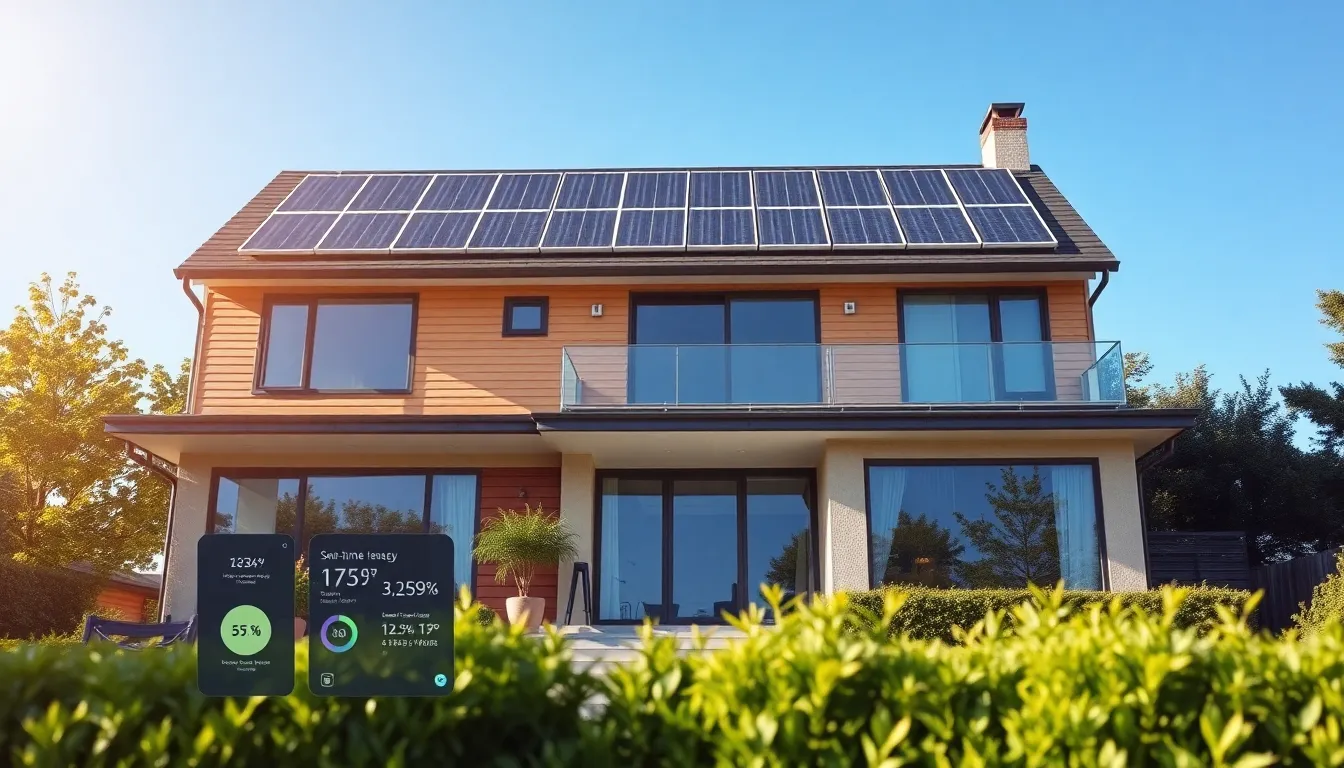Imagine living in a home that takes care of itself, powered by sunshine and automated to make your life easier. Sounds like a pipe dream, right? Well, welcome to the world of solar smart living. It’s where sustainability meets smart technology, giving you the chance to live green without sacrificing comfort. Not only does this lifestyle reduce your energy bills, but it also helps save the planet, one sunny day at a time. So, buckle up as we explore the ins and outs of solar smart living: it’s about to get enlightening.
Table of Contents
ToggleUnderstanding Solar Smart Living

Solar smart living is all about integrating solar energy solutions with smart technology to create a lifestyle that is not only environmentally friendly but also efficient and modern. Essentially, it combines solar panels and energy storage systems with Internet of Things (IoT) devices to create homes that can adapt to their occupants’ needs.
For instance, imagine having a thermostat that knows exactly when you’re home and adjusts the temperature based on the time of day, automatically leveraging solar energy to keep costs down. This approach minimizes reliance on non-renewable energy sources while enhancing your quality of life. It’s modern living with a conscience, who wouldn’t want that?
Benefits of Solar Smart Living
One of the biggest perks of solar smart living is the substantial cost savings on energy bills. By harnessing the sun’s free energy and optimizing it with smart technology, it’s possible to significantly reduce monthly expenses.
Another strong point is energy independence. With solar power, you rely less on the grid, making your home more resilient during power outages.
Besides, there’s a sense of community in adopting solar smart living. Many homeowners share tips and insights, creating a network of support for those looking to make the eco-friendly switch. Finally, living sustainably attracts eco-conscious buyers. As more people seek green living options, a solar-equipped home becomes increasingly valuable on the market.
Technologies Behind Solar Smart Living
The backbone of solar smart living lies in two core technologies: solar photovoltaics (PV) and smart home devices. Solar panels capture sunlight and convert it into electricity, which can either be used immediately or stored for later use.
Battery storage systems, like Tesla’s Powerwall, allow homeowners to store excess energy generated during the day for use during the night.
Smart home devices play a complementary role. From smart thermostats that learn your habits to energy-efficient appliances that operate during off-peak hours, these gadgets all use algorithms to save energy. Together, they create a seamless experience where homeowners can monitor their energy usage in real time through mobile applications.
Designing a Solar Smart Home
Creating a solar smart home involves some thoughtful planning and design choices.
Incorporating Solar Smart Practices
To get started, individuals should conduct an energy audit to identify where efficiencies can be realized. Next, selecting the right solar panel system and ensuring adequate battery storage will be crucial.
Also, integrating smart devices can enhance energy efficiency. Smart lighting that adjusts based on natural light levels, smart irrigation systems that water gardens only when needed, and smart security that not only protects but also conserves energy can all elevate a home’s eco-friendliness.
The key to successful design is maximizing sunlight use. Orienting windows and choosing shading options can optimize natural light, making fewer artificial lights necessary.
Challenges and Considerations
While the ecosystem of solar smart living offers incredible benefits, a few challenges must be addressed. First, the initial investment can be steep. Solar panels and smart technology may require significant upfront costs, making finances a common concern for many homeowners. But, smart financing options, tax incentives, and rebates can ease the financial burden. Ideally, potential consumers should consider long-term savings versus immediate expenditure.
Another challenge is the technological learning curve. Some individuals may be hesitant to adopt smart tech due to unfamiliarity or fear of complexity. Ensuring ease of use and understanding system capabilities can help mitigate these concerns. Finally, while solar power is undoubtedly a sustainable choice, it’s weather-dependent. Cloudy days can impact energy generation, so incorporating backup systems may be necessary.
The Future of Solar Smart Living
The future is undeniably bright for solar smart living. As technology advances, solar panels are becoming more efficient, and smart devices are growing more integrated. Energy storage solutions will continue to expand, making solar power more accessible to everyday consumers.
Also, as government policies increasingly favor renewable energy, further incentives will likely emerge, promoting wider adoption. Trends indicate that, in the coming years, a growing number of new homes will incorporate solar smart technologies as standard features, rather than optional upgrades.
The collective shift toward cleaner energy will not only benefit the environment but also create job opportunities in the green technology sector. Innovation will continue to drive this movement, paving the way for a sustainable future.








